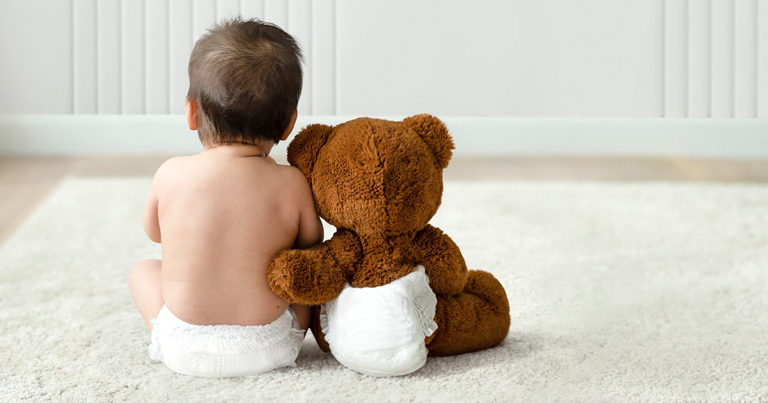Everyone needs a different amount of affection stimuli that come from their parents and other relatives or friends. The so-called embraces or transitional objects are “an act of love of a child towards an object. The word itself already says it, to give him a hug, because when the child grows up, they need to be hugged and hugged a lot. This is why these blankets or stuffed animals act as substitutes for the hugs that the children need”, explains María José Lladó, educational psychologist.
Hugs to children are like water to a plant, they help them grow healthy and happy and give their best fruits. “It is proven that the child, during their growth stage, needs hugs. The reasons are that loving physical contact stimulates the vagus nerve and causes the tension accumulated during the day to drop. Hugs release dopamine and oxytocin, which are the hormones of pleasure, and also reduce the level of cortisol, associated with stress.
The question is, how many fathers, mothers or grandparents give their children the amount of hugs they need? As this is not usually carried out fully, we resort to a substitute, which is the object of attachment”, adds the educational psychologist, María José Lladó.
“In a certain way, that special object to which our children feel a great attachment, could be compared to a fetish, understood as something that calms us, to what we give power, that produces tranquility and is external to us. As adults, they translate into objects such as a lucky charm or a rabbit's foot. Somehow, it has to do with the safety that a mother conveys. When a child feels very protected with his mother and in her environment, they will not need their fetishes, because the safety comes from an internal reference that he has experienced with his mother”, comments Lladó.
These attachment objects are "irreplaceable" due to the important value they have, since they represent parents or attachment figures, especially when they are absent. It is the child who chooses the object and it will not be possible to change it for another, even if it is very similar. Sometimes, the smell that it has acquired in contact with the skin will be decisive and can be rejected by the child if it is washed and its particular aroma changes”, explains Carla Valverde, children and teenagers clinical psychologist at the Mental Health Center of Alcobendas.
The usual age at which a child becomes attached to an object is between 4 and 6 months of age, up to 12 years, though every child is different, and many are ready to give it up earlier. The usual thing is that the object gradually loses meaning for the child, until she no longer needs it.
Source:
www.elpais.com

